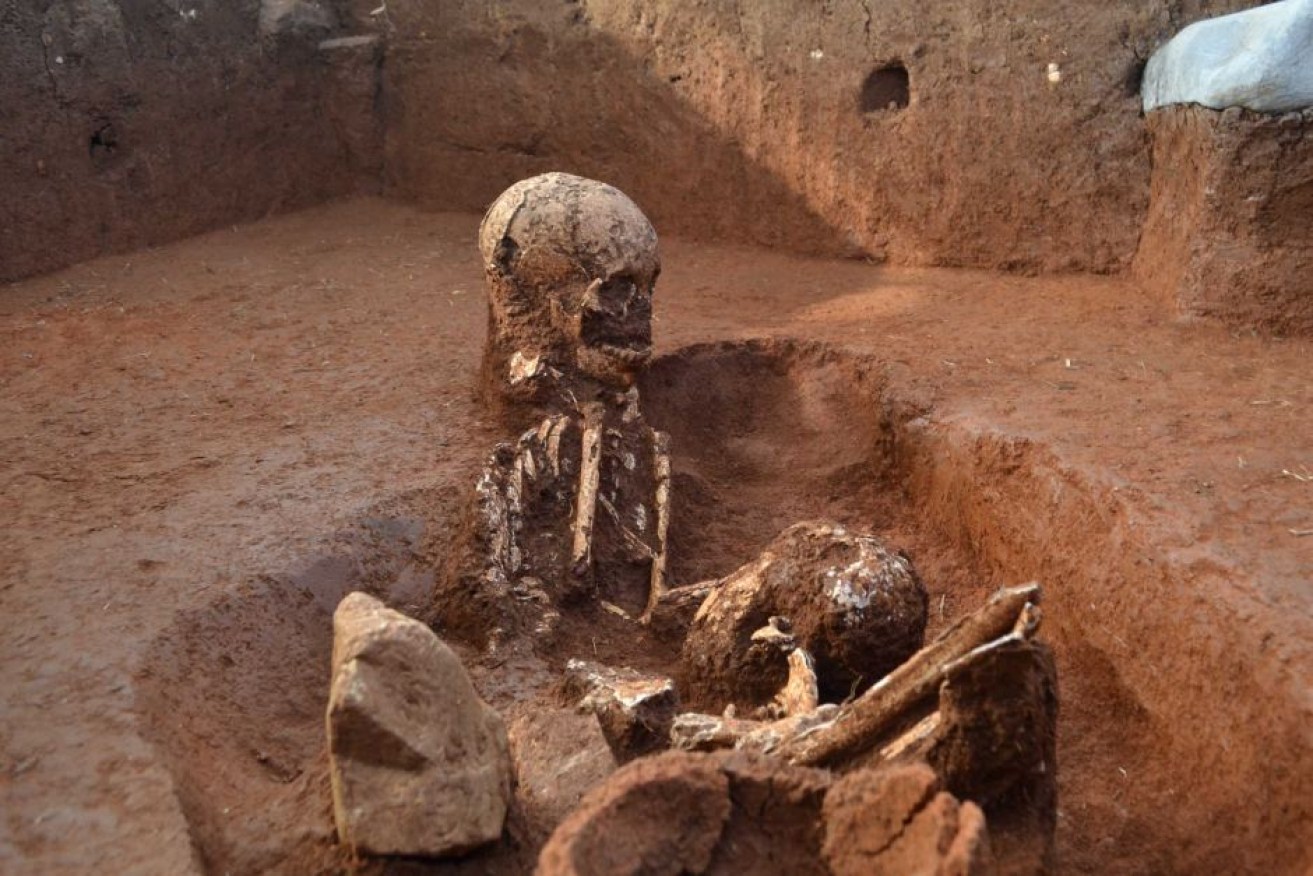Stone jars used to dispose of the dead in ancient Laos

Australian National University
One of Asia’s most mysterious archaeological sites, the Plain of Jars in Laos, was used as an ancient burial ground, Australian researchers say.
The Plain of Jars in central Laos is made up of 90 sites, each containing ancient carved stone jars up to three metres tall.
On Monday, the Australian National University (ANU) announced a team from the School of Archaeology and Anthropology had discovered human remains estimated to be 2500 years old, shedding light on the use of the sites and jars which had been previously unknown.
• Rare ‘ghost coin’ found off the coast of Oman
• Gnomesville becomes a victim of its own success
Lead ANU researcher Dr Dougald O’Reilly said the project was the first major archaeological dig at the Plain of Jars since the 1930s.
“One theory is that [the jars] were used to decompose the bodies. Later, after the flesh was removed, the remains may have been buried around the jars,” Dr O’Reilly said.
“What is now clear is that these are mortuary and were used for the disposal of the dead.”
Dr O’Reilly said the jars ranged in size between one to three metres in height and some weighed in excess of 10 tonnes.
“The use of these jars was probably during the Iron Age of South-East Asia,” he said.

Researchers also uncovered the first primary burial to be discovered at the site. Photo: Australian National University
“What we found were secondary burials, so these are human bones that have been collected up and buried around the jars and we don’t have any evidence of cremation in those cases.”
Dr O’Reilly said the dig in February had unearthed two different types of secondary burial, as well as the first-known primary burial at the sites.
“They were either buried just bundles of bones or it appears they were put into ceramic containers and then buried,” he said.
“But exciting for us, we also found evidence of primary burial, which hadn’t been reported in Laos before, so this is a person who is just buried straight into a grave in the ground.”
He said scientific analysis of how and why the burial jars were used would also shed light on the day-to-day life of the people who used the burial system.
“This will open up a huge amount of information into who these people were,” he said.
“We’re trying to find evidence of occupation. Because these are mortuary sites, there’s no evidence of people living near them.
“Indeed if the jars were used to decompose bodies you probably wouldn’t want to be living in close proximity to them.”
The excavations conducted in February 2016 formed part of a five-year Australian Research Council Discovery Project, which is being managed in conjunction with Monash University and the Lao Ministry of Information, Culture and Tourism.
The Lao government is currently pushing for the Plain of Jars to be listed as a UNESCO World Heritage site.
-ABC







